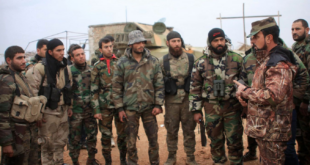- Battlefield Assessment
Last week the Ukrainian Armed Forces showed resilience in the face of intensifying clashes and a pressing operational tempo. The eastern Ukrainian towns of Pokrovsk and Kurakhove have been the epicenters of the fighting, with Russia exerting significant pressure to breach and exploit Ukrainian defenses. In Pokrovsk, the Russian military slowly yet steadily made tactical gains.
In the Kharkiv and Sumy regions, Russian artillery and rocket salvos battered Ukrainian positions. The Ukrainian General Staff also reported fierce clashes in the areas of Siversk, Kupiansk, and Toretsk. Moreover, Vuhledar continued to witness intense fighting, as it has in recent weeks. Drone-on-drone warfare also continued apace in the skies above Ukraine and, now, over Russia.
Last week General Kyrylo Budanov, Ukraine’s defense intelligence chief, made notable public appearances during which he provided valuable insights into Kyiv’s political, military, and geopolitical calculations. Budanov assessed that the Kremlin is aiming for a decisive end to the war by 2026 at the latest, largely due to the economic pressure on Russia that could intensify as early as 2025. Budanov has not ruled out the possibility of a total Russian mobilization if the situation in Ukraine becomes more challenging for Moscow. The intelligence chief also expressed concern at the flow of arms, particularly ballistic missiles, pouring into Russia from North Korea.
Meanwhile, North Atlantic Treaty Organization (NATO) member states’ efforts to transfer F-16 combat aircraft continued to show promise. Recently, Danish Defense Minister Troels Lund Poulsen announced that Ukraine will receive another batch of F-16s soon. As a result of Western aid, Ukraine has already prepared to operate 20 F-16 platforms before the end of this year.
- Russia Launches a Counteroffensive to Regain Territory in Kursk
Moscow launched a counteroffensive to regain territory from Ukrainian forces in the Russian region of Kursk. In the absence of large-scale offensive action thus far, the Kremlin’s forces have made only tactical gains in their effort to oust Ukrainian fighters from Russia. Despite the incremental exchange of territory, the battlefield outlook in Kursk remains unchanged.
The Russian counterattack has focused on the left flank of Ukraine’s positions in the region, where the Russian General Staff has fielded airborne troops and naval infantry. Initially, Moscow used unskilled and poorly disciplined conscripts and line infantry to man the front lines. The shift in the Russian high command’s force-generation tactics reflects the rising political stakes for the Kremlin: the longer Ukraine retains a patch of Russian territory, the worse the situation looks for Moscow.
Last week Ukraine continued air-ground attacks over Kursk with manned and unmanned platforms. Ukraine’s activity in the skies highlights how a semi-permissive airspace leaves Russia vulnerable; from the outset of the Kursk campaign, the Ukrainian military has not ceased operating in the air.
Ukraine also continued its political warfare campaign in Kursk. Kyiv’s Ministry of Foreign Affairs appealed to the United Nations and the International Committee of the Red Cross to request assistance with humanitarian efforts in Ukraine-controlled areas inside Russia.
- Iranian Drones Menace the Skies over Ukraine
Russia carried out numerous missile and drone strikes in Ukraine last week, targeting population centers in multiple cities including Kyiv. The large number of Iranian Shahed loitering munitions in these strike packages suggests that Russia and Iran’s joint drone plant in the Russian region of Tatarstan is producing a significant quantity of systems.
Previous editions of this report highlighted the threat posed by Russia and Iran’s collaborative effort to manufacture drones, as well as the child labor abuses involved in the production of these munitions. Unchecked, this cooperation is likely to rise in the coming months. In August, the Kremlin launched around 800 Shahed loitering munitions; in total, there were only four days in the entire month when Iranian drones did enter Ukrainian airspace. Thus far in September, Russia has used Shahed drones at an even higher rate than it did in August.
Shaheds generally fly at low altitudes, following river valleys when possible, to avoid radar detection. To counter the drones, Ukraine has fielded thousands of pole-mounted microphones as part of a nationwide network to detect the characteristic sound of the Shaheds’ engines. A central command-and-control system assesses the data these microphones provide and communicates the drones’ likely routes to Ukrainian forces. Servicemen then hunt the munitions with truck-mounted anti-aircraft weaponry and machine guns.
In recent weeks Russian drone operators have begun to change tactics to avoid detection, flying the Shaheds at higher altitudes to escape Ukraine’s microphones networks and mobile patrols. Now, Russia’s loitering munitions only descend before homing for their final dive toward a target. As a result, Ukraine’s fixed- and rotary-wing aerial assets, which are effective at higher altitudes, have become even more critical in the hunt for Shaheds.
 Eurasia Press & News
Eurasia Press & News



